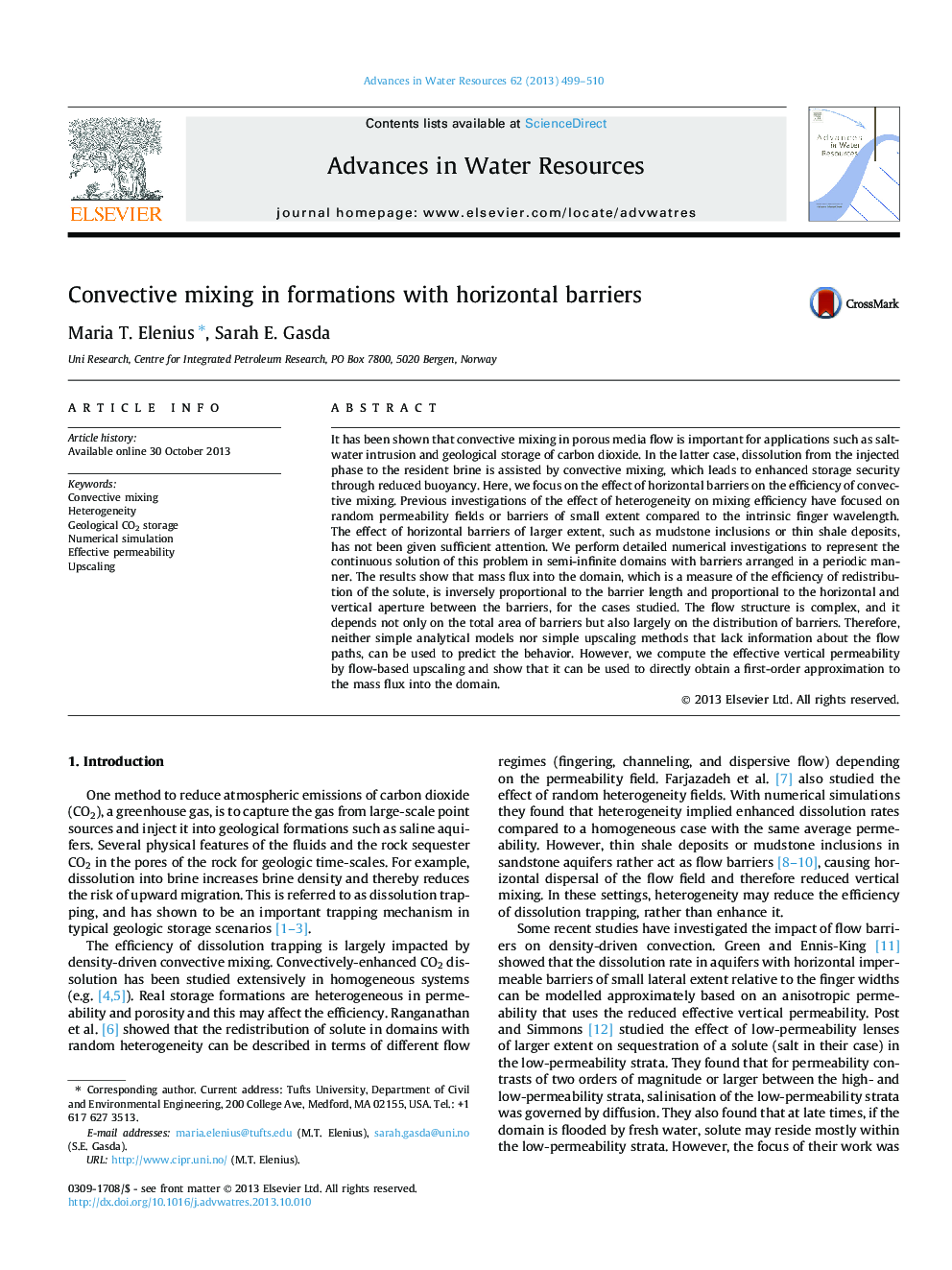| Article ID | Journal | Published Year | Pages | File Type |
|---|---|---|---|---|
| 6381136 | Advances in Water Resources | 2013 | 12 Pages |
â¢Horizontal barriers reduce the strength of convective mixing.â¢The barrier area and distribution both impact the mixing efficiency.â¢A reduced effective permeability explains the dissolution rate to first-order.â¢This provides for quick estimates that can be used in upscaled models.
It has been shown that convective mixing in porous media flow is important for applications such as saltwater intrusion and geological storage of carbon dioxide. In the latter case, dissolution from the injected phase to the resident brine is assisted by convective mixing, which leads to enhanced storage security through reduced buoyancy. Here, we focus on the effect of horizontal barriers on the efficiency of convective mixing. Previous investigations of the effect of heterogeneity on mixing efficiency have focused on random permeability fields or barriers of small extent compared to the intrinsic finger wavelength. The effect of horizontal barriers of larger extent, such as mudstone inclusions or thin shale deposits, has not been given sufficient attention. We perform detailed numerical investigations to represent the continuous solution of this problem in semi-infinite domains with barriers arranged in a periodic manner. The results show that mass flux into the domain, which is a measure of the efficiency of redistribution of the solute, is inversely proportional to the barrier length and proportional to the horizontal and vertical aperture between the barriers, for the cases studied. The flow structure is complex, and it depends not only on the total area of barriers but also largely on the distribution of barriers. Therefore, neither simple analytical models nor simple upscaling methods that lack information about the flow paths, can be used to predict the behavior. However, we compute the effective vertical permeability by flow-based upscaling and show that it can be used to directly obtain a first-order approximation to the mass flux into the domain.
